Article contents
The Fall of the Soul in Plato's Phaedrus
Published online by Cambridge University Press: 11 February 2009
Extract
In the myth of the Phaedrus Plato sets forth a picture of the life of discarnate souls in heaven. He represents these souls by the symbol of a winged charioteer driving winged horses. In the case of the souls of the gods (theoi), the charioteers and horses are good (246 a 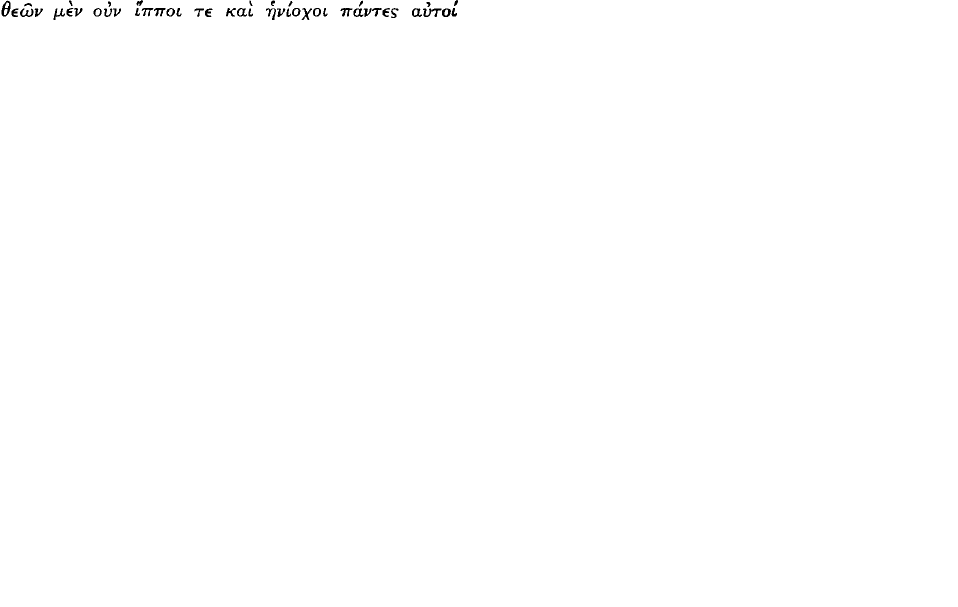
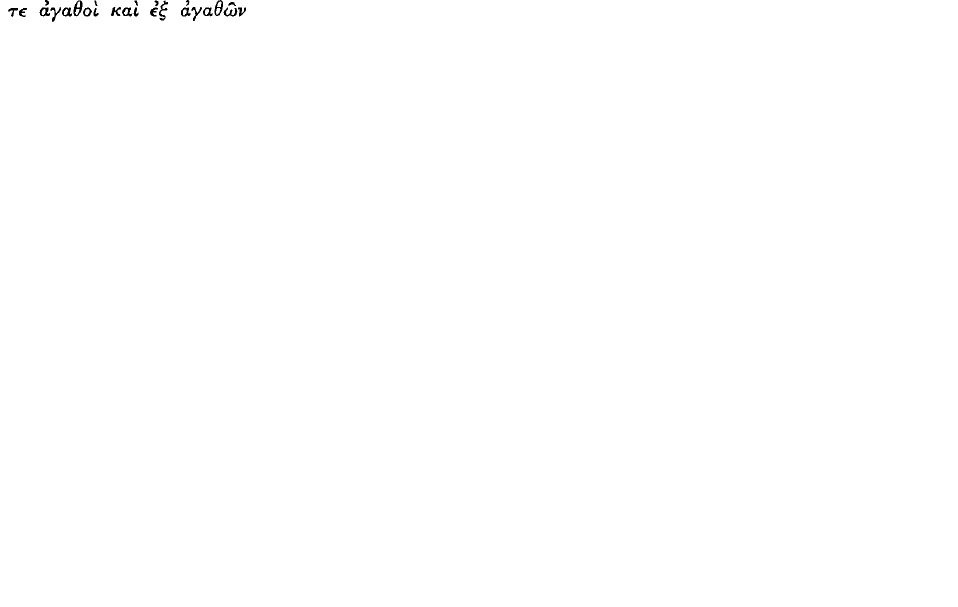 ). In the case of the other souls whom Plato calls daimones, and among whom our own souls are included, the soul is represented by a charioteer with two horses of which the right one is good but the left one evil (246 b
). In the case of the other souls whom Plato calls daimones, and among whom our own souls are included, the soul is represented by a charioteer with two horses of which the right one is good but the left one evil (246 b 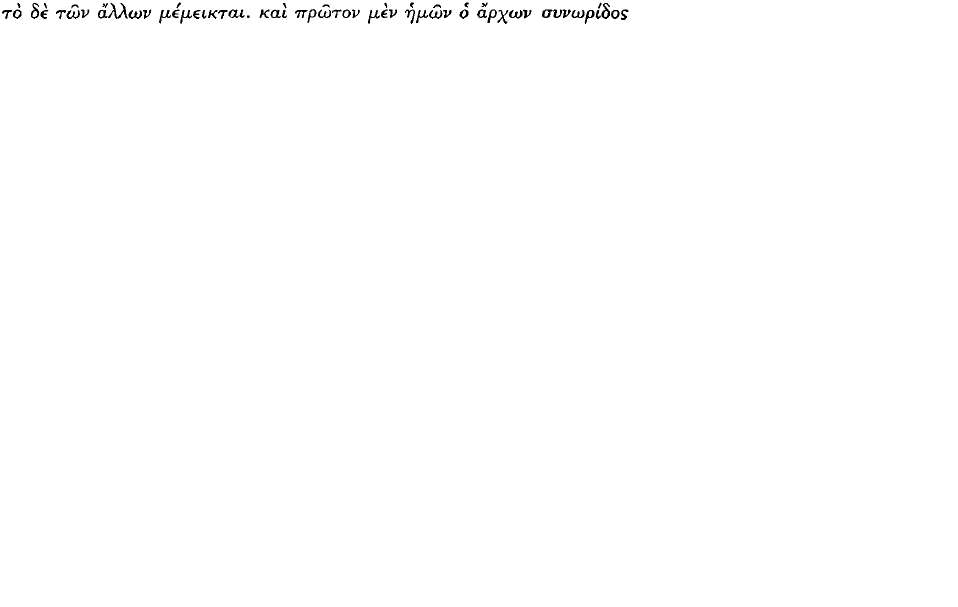
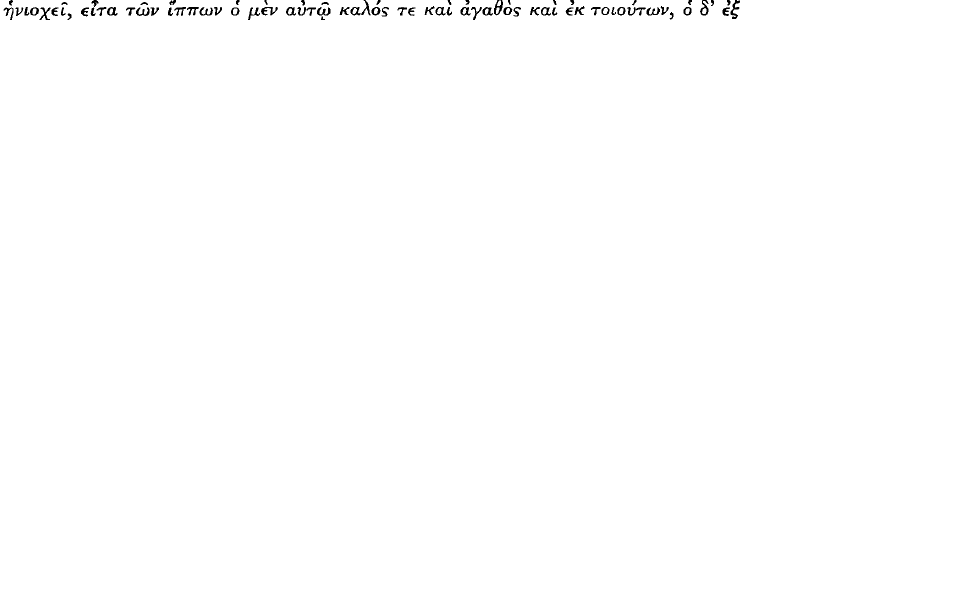
 ). It is generally agreed that the right and left horses represent thumos and passion respectively, while the charioteer symbolizes reason. Plato goes on to describe a procession which the gods and daimones make up to the outer edge of heaven in order to contemplate the Forms which lie beyond. The gods, we are told, make the ascent easily and when they reach the edge of heaven have no difficulty in staying there and beholding the Forms. The daimones, however, experience difficulty due to the recalcitrance of the evil horse, which all their charioteers possess (247 b
). It is generally agreed that the right and left horses represent thumos and passion respectively, while the charioteer symbolizes reason. Plato goes on to describe a procession which the gods and daimones make up to the outer edge of heaven in order to contemplate the Forms which lie beyond. The gods, we are told, make the ascent easily and when they reach the edge of heaven have no difficulty in staying there and beholding the Forms. The daimones, however, experience difficulty due to the recalcitrance of the evil horse, which all their charioteers possess (247 b 
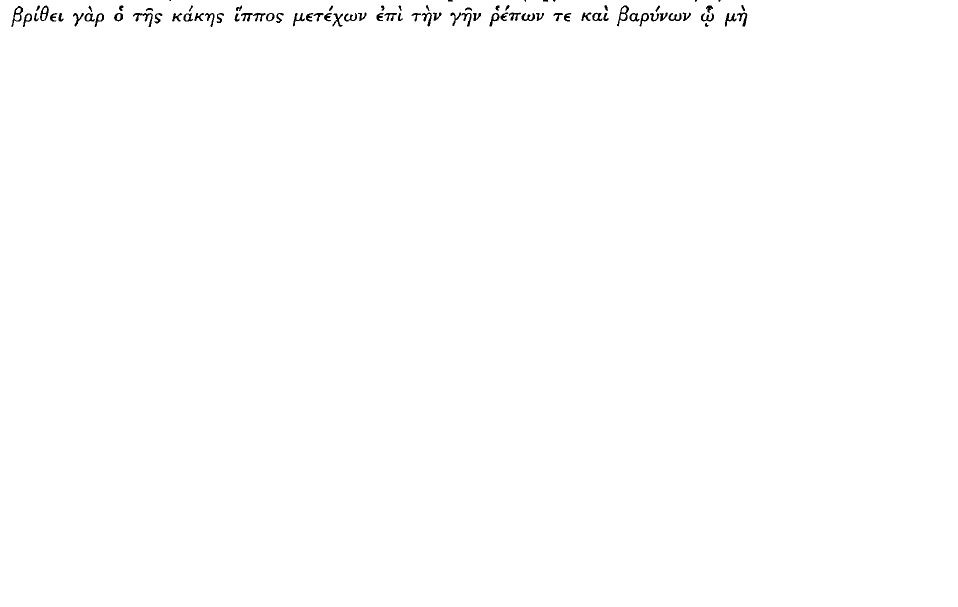
 Plato divides the daimones into three main groups: those who succeed in beholding the Forms though with difficulty; those whose vision is only partial; those, finally, who fail to see the Forms at all. Since contemplation of the Forms provides the nourishment by which the wings of the soul are nurtured, those daimones who fail to see the Forms at all lose their wings and fall to earth. They have to go through a series of earthly existences for 10,000 years, before they regain their wings and return to heaven.
Plato divides the daimones into three main groups: those who succeed in beholding the Forms though with difficulty; those whose vision is only partial; those, finally, who fail to see the Forms at all. Since contemplation of the Forms provides the nourishment by which the wings of the soul are nurtured, those daimones who fail to see the Forms at all lose their wings and fall to earth. They have to go through a series of earthly existences for 10,000 years, before they regain their wings and return to heaven.
- Type
- Research Article
- Information
- Copyright
- Copyright © The Classical Association 1964
References
page 56 note 1 They fail because of the  (248 b) of their charioteers, that is to say because of their lack of skill in controlling the evil horse. The use of
(248 b) of their charioteers, that is to say because of their lack of skill in controlling the evil horse. The use of  (248 c) I take to indicate that Plato does not wish to go into the circumstances which led to the imperfect condition of the soul and its consequent failure in the vision. For the possible use of
(248 c) I take to indicate that Plato does not wish to go into the circumstances which led to the imperfect condition of the soul and its consequent failure in the vision. For the possible use of  without any reference to chance see Bluck, R. S., A.J.P. lxxix (1958), 158.Google Scholar It appears from 249 b that all human souls have seen something of Truth, hence Plato does not strictly mean that the third category of daimones to which our souls belonged in the precarnate life failed completely in the vision. See, e.g., R. Hackforth, , Plato's Phaedrus (Cambridge, 1952), p. 83.Google Scholar
without any reference to chance see Bluck, R. S., A.J.P. lxxix (1958), 158.Google Scholar It appears from 249 b that all human souls have seen something of Truth, hence Plato does not strictly mean that the third category of daimones to which our souls belonged in the precarnate life failed completely in the vision. See, e.g., R. Hackforth, , Plato's Phaedrus (Cambridge, 1952), p. 83.Google Scholar
page 56 note 2 The change to the psychology of the Phaedrus is made, it is believed, not necessarily because Plato did not previously believe in an original fall, but because in the Phaedrus he takes it upon himself for the first time to explain this fall systematically.
page 56 note 3 See p. 60, n. 4, for Hackfordi's tentative suggestion that in the Phaedrus Plato's view may be that the lowest part contains an intrinsic defect rather than that it is to be condemned as a whole.
page 57 note 1 I he order oi these dialogues I take to be Phaedo Republic Phaedrus Timaeus. It has often been pointed out that Plato's psychology cannot be made to yield a systematic pattern of development.
page 57 note 2 A.J.P. lxxix (1958), 156 f., 405 f.Google Scholar See also Plato's Meno (Cambridge, 1961), p. 52.Google Scholar
page 57 note 3 Bluck takes  (247 b 3) as denoting ‘heaviness’, which is probably correct.
(247 b 3) as denoting ‘heaviness’, which is probably correct.
page 57 note 4 The departure from the cycle every 10,000 years, Bluck suggests (art. cit., p. 160Google Scholar), is simply to give souls the opportunity to refresh their memories with regard to the Forms.
page 57 note 5 An immediate difficulty in the application of this idea to the Phaedrus, which Bluck does not discuss, arises from the apparent existence of souls implied at Phaedrus 249 b who have never seen the Forms (literally never, as opposed to those souls at 248 c who in fact have had some vision; see p. 56, n. 1 above), and have never been in human form. Plato, describing the choosing by souls of lives for the second periodos, says  Although Plato does not discuss these souls in the Phaedrus, it seems preferable, in view of the form of the sentence, to believe that he had in mind some souls actually existing, than to take
Although Plato does not discuss these souls in the Phaedrus, it seems preferable, in view of the form of the sentence, to believe that he had in mind some souls actually existing, than to take  as a purely hypothetical statement referring to a case of which there could be no examples. On this question see Long, H. S., A Study of the Doctrine of Metempsychosis in Greece (Princeton, 1948,) p. 79;Google ScholarRobin, L., Phédre (Paris, 1954), p. xcii;Google ScholarHackforth, , op. cit., p. 91.Google Scholar
as a purely hypothetical statement referring to a case of which there could be no examples. On this question see Long, H. S., A Study of the Doctrine of Metempsychosis in Greece (Princeton, 1948,) p. 79;Google ScholarRobin, L., Phédre (Paris, 1954), p. xcii;Google ScholarHackforth, , op. cit., p. 91.Google Scholar
page 58 note 1  at 247 b 3 explains
at 247 b 3 explains 
 and refers to a characteristic possessed by the left horse of all the daimones.
and refers to a characteristic possessed by the left horse of all the daimones.
page 58 note 2 I believe this interpretation to be probable. A distinction may be made at 247 b 3–4 between  and
and  the former referring to a natural tendency to move downwards (which may be checked by training), and the latter referring to actual motion downwards.
the former referring to a natural tendency to move downwards (which may be checked by training), and the latter referring to actual motion downwards.
page 58 note 3 In reply to a query of mine Dr. Bluck very kindly wrote to say that although he had not considered the question as such, he believed that this was his assumption. He referred me to his view (cf. art. cit., p. 160Google Scholar) that upon purification souls will be able to see the Forms when they wish—which is clearly not the case with any of the daimones. I have dwelt upon the point because it seems that, on his argument, this must be our assumption. The two points which I make are my own.
page 59 note 1 Phaedrus 250 c. Referring to our state before incarnation, during our vision of the Forms, Plato describes us as 

 For a good note on this point see ad loc. Thompson, W. H., The Phaedrus of Plato (London, 1868).Google Scholar Also see Hackforth, , op. cit., p. 95.Google Scholar
For a good note on this point see ad loc. Thompson, W. H., The Phaedrus of Plato (London, 1868).Google Scholar Also see Hackforth, , op. cit., p. 95.Google Scholar
page 59 note 2 Art. cit., p. 163.Google Scholar
page 59 note 3 Hence  As Hackforth notes ‘in the sequel (81 e, 82 e, 83 d) he seems fully to accept the symbol of the prison’. Plato's Phaedo (Cambridge, 1955), p. 36.Google Scholar
As Hackforth notes ‘in the sequel (81 e, 82 e, 83 d) he seems fully to accept the symbol of the prison’. Plato's Phaedo (Cambridge, 1955), p. 36.Google Scholar
page 59 note 4  (i.e. immortality, reincarnation, and recollection)
(i.e. immortality, reincarnation, and recollection) 

page 59 note 5 Plato's Meno, p. 318.Google Scholar
page 60 note 1 Phaedo 81 c 4.
page 60 note 2 Ibid. 81 e 1; cf. 81 c 1–2.
page 60 note 3 The degree of imperfection must be considered also, since  can hardly be divorced from the notion of moral purity per se. On the traditional interpretation, since consummation of the vision of the Forms represents the supreme test for the soul, no significant degree of impurity need be entailed on the part of souls who fail. Plato's point may rather be that the latter are simply not in a state of absolute perfection (thus
can hardly be divorced from the notion of moral purity per se. On the traditional interpretation, since consummation of the vision of the Forms represents the supreme test for the soul, no significant degree of impurity need be entailed on the part of souls who fail. Plato's point may rather be that the latter are simply not in a state of absolute perfection (thus 
 at 247 b 4 may be taken to mean ‘not perfectly’). This view is,strengthened if we regard some of the daimones as having trained their left horse
at 247 b 4 may be taken to mean ‘not perfectly’). This view is,strengthened if we regard some of the daimones as having trained their left horse  At 248 a we learn that the best of the daimones succeed in the vision only widi difficulty; this indicates that even where absolute perfection is found, failure is not far absent. If, on the other hand, the souls are impure souls from earth whose condition, as Bluck maintains (art. cit., p. 159Google Scholar), depends ultimately upon their own will, it must be presumed that many may be in a state of extreme impurity. Consequently, with regard to the Timaeus, Bluck suggests (art. cit., p. 163Google Scholar) that the state of souls may be such after a cycle that they have to undergo subsequently an endless number of cycles. With regard, then, to the degree of imperfection, the latitude involved on the traditional interpretation need be regarded as trifling and explicable because the taint is not that of body with which Plato is preoccupied, while the latitude involved on the interpretation of Bluck seems impossibly great. One difficulty is to understand how souls of a significant degree of impurity could have any vision of the Forms, since for Plato the moral and intellectual aspects are one.
At 248 a we learn that the best of the daimones succeed in the vision only widi difficulty; this indicates that even where absolute perfection is found, failure is not far absent. If, on the other hand, the souls are impure souls from earth whose condition, as Bluck maintains (art. cit., p. 159Google Scholar), depends ultimately upon their own will, it must be presumed that many may be in a state of extreme impurity. Consequently, with regard to the Timaeus, Bluck suggests (art. cit., p. 163Google Scholar) that the state of souls may be such after a cycle that they have to undergo subsequently an endless number of cycles. With regard, then, to the degree of imperfection, the latitude involved on the traditional interpretation need be regarded as trifling and explicable because the taint is not that of body with which Plato is preoccupied, while the latitude involved on the interpretation of Bluck seems impossibly great. One difficulty is to understand how souls of a significant degree of impurity could have any vision of the Forms, since for Plato the moral and intellectual aspects are one.
page 60 note 4 Op. cit., pp. 107 f. Hackforth advocates caution and suggests tentatively that since Plato is not propounding psychological doctrine for its own sake, it is possible that he does not mean to condemn the whole lowest part of the soul, but rather an ever-present element in it of carnal lust  , which is to the forefront of his mind in the Phaedrus. This view, if we accept it, would not materially affect the argument. Whatever Plato has in the forefront of his mind in the symbol of the evil horse here and at 247 b— be it the whole lowest part or simply one ever-present element in it—that thing is intrinsically evil.Google Scholar
, which is to the forefront of his mind in the Phaedrus. This view, if we accept it, would not materially affect the argument. Whatever Plato has in the forefront of his mind in the symbol of the evil horse here and at 247 b— be it the whole lowest part or simply one ever-present element in it—that thing is intrinsically evil.Google Scholar
page 60 note 5 i.e. as opposed to trying to assert itself by force.
page 61 note 1 In opposition to his description of the right horse as 

page 61 note 2 We need not translate with Thompson, (op. cit., p. 45)Google Scholar ‘evil by nature and by conditioning’ though this could be the contrast intended.  however, may mean ‘still evil’ in the sense of ‘irremediably evil’, and not preclude proper training, as in the translation of Thompson.
however, may mean ‘still evil’ in the sense of ‘irremediably evil’, and not preclude proper training, as in the translation of Thompson.
page 61 note 3 Hackforth, , op. cit., p. 107. This is because Plato is primarily concerned with the opposition of the better parts of the soul to the lowest part. Their cause for his purpose may be treated as one. At 253 c thumos is distinguished, as in the Republic, by its love of honour or glory.Google Scholar
page 61 note 4 For a quasi-identification of the desires of reason and thumos see Republic 440 a-b. For a statement of the possible corruption of thumos see ibid. 441 a, 553 c f., 585 c f. This point with regard to thumos is made well by Thompson, , op. cit., p. 45.Google Scholar
page 62 note 1 I use ‘incarnation’ here as ‘incorporation’ in my first objection above to denote the union of the soul with an earthly body (246  ). The question of whether the theoi are asomatic must clearly be left open. Such bodies as they might possess would not of course limit the powers of their souls in the manner in which earthly bodies limit the powers of our souls.
). The question of whether the theoi are asomatic must clearly be left open. Such bodies as they might possess would not of course limit the powers of their souls in the manner in which earthly bodies limit the powers of our souls.
page 62 note 2 Op. cit., p. 69.Google Scholar The clear implication is that the clause introduced by  parallels that introduced by
parallels that introduced by  and like the latter expresses a distinction, possible or probable, which is a class distinction. The distinction may be that the souls of the theoi contain more than three parts (Hackforth, , op. cit., p. 76, n. 4Google Scholar). or it may be that they have only one part, viz. reason. By drawing our attention to the fact that in the case of the souls of the theoi he has no definite number of horses in mind, Plato may be indicating that in their case the horses have no symbolic value, and are present only to accord with the imagery with which he chooses to express the prenatal vision of our souls. This possibility that in the case of the souls of the theoi the horses have no symbolic value is in fact considered by Hackforth, , op. cit., p. 76.Google Scholar
and like the latter expresses a distinction, possible or probable, which is a class distinction. The distinction may be that the souls of the theoi contain more than three parts (Hackforth, , op. cit., p. 76, n. 4Google Scholar). or it may be that they have only one part, viz. reason. By drawing our attention to the fact that in the case of the souls of the theoi he has no definite number of horses in mind, Plato may be indicating that in their case the horses have no symbolic value, and are present only to accord with the imagery with which he chooses to express the prenatal vision of our souls. This possibility that in the case of the souls of the theoi the horses have no symbolic value is in fact considered by Hackforth, , op. cit., p. 76.Google Scholar
page 62 note 3 See p. 57, n. 4, above.
page 63 note 1 The lowest part of the soul is given a legitimate function in the Republic. It causes discord, however, by trying on occasion to go beyond this function.
page 63 note 2 It does not matter for the purpose of the argument which kind of soul Plato has in mind, since Socrates' point at Republic 611 a-b is diat no soul can be subject to discord if it is to be immortal. Meldrum, M. (J.H.S. lxx [1950], 71), however, makes the interesting, though tentative, suggestion that we should consider the possibility that Plato may be referring to human souls.Google Scholar
page 63 note 3 In dealing with this topic I have been compelled to take a negative attitude towards Dr. Bluck's two articles in A.J.P. There are, however, many valuable points in these articles, and I have received great benefit from his scholarly and extremely lucid discussion.
- 6
- Cited by


